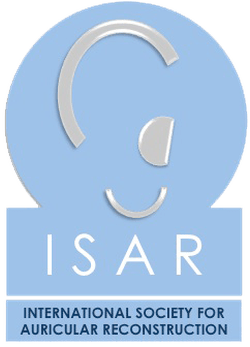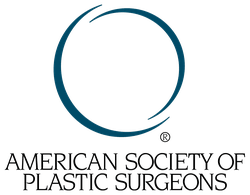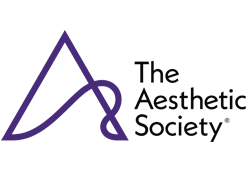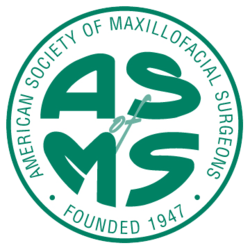Otoplasty Blogs
- Category: Otoplasty
While any surgical incision leaves a scar, there are techniques surgeons can use to reduce the appearance of scars after ear surgery. Dr. Charles Thorne in New York, NY, is an expert in the field of otoplasty. He has extensive experience, training, and education in performing ear surgery. During your otoplasty, he can use advanced surgical techniques to hide incisions and minimize the possibility of visible scarring. While ear surgery scars are inevitable, Dr. Thorne works to ensure they are hidden and, therefore for all intents and purposes, invisible.
Incision Types
The placement and type of incision used in your surgery will depend on the corrections needed to achieve the desired result. In the vast majority of cases, Dr. Thorne makes the incision within the depths of the sulcus, the area behind the ear. Both the incision and the sutures placed to alter the position of the ear stay hidden in the crease.
Other situations are slightly more complex. If Dr. Thorne is reducing the size of the ear or correcting other more rare problems, he must make another incision on the visible surface of the ear. However, in this case, he can hide the scar up under the helical rim. When reducing the size or changing the shape of the earlobes, a small incision may be required. Dr. Thorne can place it at the bottom of the earlobe to minimize visibility in this area as well.
Scar Care Techniques
The good news is that of all the parts of the body, the face yields the most inconspicuous scars. So the scars on the face are almost always barely visible. The most useful technique for speeding up the disappearance of scars is the application of consistent pressure. In most cases, the location of otoplasty scars prevents patients from using this method.

Skilled otoplasty surgeons like Dr. Thorne can precisely place incisions so that the resulting scar is not visible.
Over time, scars tend to fade on their own and, in general, otoplasty scars are invisible to casual observation. Following Dr. Thorne's recovery instructions may also help improve the appearance of scars as they heal.
Dr. Thorne's surgical techniques minimize the chance of visible scars in both the short- and long-term.
Keloid Scars
In rare cases, otoplasty patients develop keloid scars, which occur from an overgrowth of scar tissue. They are caused by an excess of collagen during healing and typically appear lumpy or ridged. While keloids can happen to anyone, they are more common in patients with more pigmented skin. Keloids typically form after the incision has healed and are not harmful. However, if you are worried about how your incision is healing, you can contact Dr. Thorne with any questions or concerns.
Contact Us
Almost any incision will result in a scar. However, the benefit of otoplasty is that most surgical work occurs behind the ears. By undergoing your procedure with an experienced surgeon, you are less likely to experience serious scarring. Dr. Thorne has spent years performing otoplasty. His surgical techniques minimize the chance of visible scars in both the short- and long-term. To find out more about otoplasty, contact our office online or call us at (212) 794-0044 today. You can also consult our otoplasty FAQ page for more information.
- Category: Otoplasty
Patients looking to improve the appearance of their ears have many questions about cosmetic ear surgery, also known as otoplasty. Dr. Charles Thorne answers the most commonly asked otoplasty FAQ at his New York, NY, practice to help inform potential candidates. Patients who are well prepared are more likely to have realistic expectations for what otoplasty surgery can accomplish. Before surgery is performed, you will be given the opportunity to meet with Dr. Thorne to discuss any additional questions or concerns.
What is Otoplasty?
Otoplasty is a procedure recommended to improve the shape and position of an individual’s ears. Commonly referred to as ear pinning or cosmetic ear surgery, otoplasty can address a variety of imperfections, such as deformed, uneven, or overly large ears. It is most frequently performed as a means to move protruding ears closer to the head.


Otoplasty with reduction of upper ear
Is Otoplasty Covered by Insurance?
In most cases, otoplasty surgery is not covered by insurance since it is considered an elective or cosmetic procedure. However, if the procedure is recommended to ease medical symptoms, insurance may cover a portion. Cost should not be prohibitive, which is why Dr. Thorne accepts CareCredit® to cover any out-of-pocket expenses. This healthcare financing option breaks the treatment cost down into affordable monthly payments.
Dr. Thorne accepts CareCredit financing to cover the cost of otoplasty surgery.
How Should I Prepare for Ear Surgery?
Preparing for surgery can help prevent complications from arising and assist you in experiencing a smooth recovery. Before your procedure, you will be given a list of instructions to follow that may include:
- Undergoing a medical evaluation and lab tests
- Taking medications after the procedure
- Avoiding certain vitamins, supplements, and medications such as aspirin or ibuprofen, as they can cause increased bleeding
- Avoiding cigarettes and tobacco products for at least two weeks before and after surgery
- What to wear on the day of surgery
If you choose to undergo general anesthesia, you will also need to arrange for a loved one to accompany you to and from your appointment.
How Young Can an Otoplasty Patient Be?
In severe cases, otoplasty can be performed on children as young as four years old. Many parents choose to wait until the child is at least seven so they can be an active participant in their care. In addition, children at this stage are better able to handle and recover from surgery. If your child becomes distressed at the mention of surgery, it may be best to wait until they are older and more mature.
When Can I Expect to See Results?
Most patients will see the results immediately and are usually ecstatic. The final appearance takes several weeks because of the swelling. Dr. Thorne will explain the otoplasty recovery process at length during your pre-surgical appointments.
Contact Us for More Information
Otoplasty can improve your appearance and give you greater confidence when wearing hats and certain hairstyles. If your ears detract from your self-esteem, it may be time to consider undergoing otoplasty. To schedule a private consultation with Dr. Thorne, please contact our office today online or by calling (212) 794-0044. Be sure and bring a list of questions with you to your initial consult that you would like addressed.
- Category: Otoplasty
Patients considering ear surgery often have questions regarding otoplasty recovery. During a consultation at his New York, NY, practice, Dr. Charles Thorne will explain the procedure in detail and provide you with tips to assist you with healing. While each patient responds to surgery differently, in most cases, patients should be able to resume most normal activities after one week.
Immediately After Surgery
It is imperative that patients carefully follow post-surgical instructions to ensure a smooth recovery and satisfying outcome. After otoplasty surgery, your head will be loosely wrapped with padded bandages to protect your ears. These fluff bandages will need to remain in place for several days after your procedure. At a follow-up appointment about one week after surgery, Dr. Thorne will remove all bandages. For routine otoplasty all the sutures are absorbable and therefore no suture removal is required. Dr. Thorne may ask that the patient wear a loosely fitting headband at night only for a few weeks. It is important not to wear the headband during the day. Patients frequently have the mistaken impression that a headband is necessary for healing or to maintain the correction; not true!
Recovery Timeline
You may take a shower up to the neck while wearing the bandage and then may shower and shampoo normally once the dressing is removed. When the bandages are removed, your ears will appear swollen and bruised. This is completely normal. Bruising and swelling are temporary. For any soreness, take pain relievers as directed.

Adults can expect to return to work within the first week. Children who undergo otoplasty can typically return to school one week after surgery. Patients with long hair can cover their swollen ears with the hair and return to school or work as soon as the dressing is removed. Patients with shorter hair may wish to remain at home for a week or 10 days for resolution of most of the swelling.
It is imperative that patients carefully follow post-surgical instructions to ensure a smooth recovery and satisfying outcome.
Strenuous activity should be avoided for at least two to three weeks, but most patients can expect to resume other normal activities one week after surgery. When resting, keep your head elevated above your heart, if possible. Again, this allows the swelling to go down faster.
Minimizing Side Effects
If you notice increased pain, especially pain that is much greater on one side than the other, call the office immediately. You may have a hematoma, which is a collection of blood under the skin.
When Can Patients Enjoy Final Results?
While you will notice some improvement after surgery, the body takes time to heal. During your follow-up appointments, we will encourage you to be patient with your body as it recovers to help you maintain realistic expectations. Over the course of the next six to eight weeks, as the swelling subsides, you will begin to enjoy your final results.
Learn More
To learn more about otoplasty recovery and to determine whether you are a good candidate for this procedure, please schedule your consultation today with Dr. Thorne. You can contact the doctor online or reach the practice by calling (212) 794-0044.
- Category: Otoplasty
The human ear varies dramatically in size from one person to the next. Prominent ears, no matter their size, will stick out or protrude from the head at an abnormal angle. This condition can result in significant discomfort and a lack of self-confidence. In normal ears, the external cartilage, or auricle, is no more than two centimeters from the head. This distance usually creates a 25-degree angle between the ear and the side of the head. Ears beyond these measurements can seem excessively prominent when viewed from the front or behind. Dr. Charles Thorne provides surgical treatment to correct prominent ears at his practice in New York City.
Otoplasty Results


Patient suffered from prominent ears with a protruding upper third of the ear. Otoplasty helped bring the auricle closer to the head and improved proportions.
Causes
There are three common causes of prominent ears. These features can be present alone, but more commonly occur in combination and include:
- Underdeveloped antihelical fold: The upper third and middle of the ear can become significantly prominent because the antihelix does not fold properly, causing the scapha and helical rim to protrude.
- Prominent concha: If the concha or depressed areas of the ear are very deep or have an excessive angle with the mastoid (the bone underneath the ear), the ears can protrude. These abnormalities can result in prominence of the middle of the ear.
- Protruding earlobe: Large and protruding earlobes cause the lower third of the ear to become excessively prominent.
Excessively large ears can also appear overly prominent. Average male adult ears are 2.5 inches long and those in females are slightly smaller. Children's ears barely grow after age 10, so they will only be fractionally smaller than the adult size.
Additional Deformities
While many prominent ears are otherwise normal in shape, there may be additional deformities. Macrotia occurs when children have excessively large ears that may also be prominent. Constricted ears are abnormally small but can also appear excessively prominent because the helical rim is too small, causing the ear to curl forward. Stahl ear occurs when the ear has a third crus or fold, which can give the ear a pointed appearance in addition to protruding.
Dr. Thorne can help you achieve aesthetic, natural-looking ears that do not protrude.
Treatment
Otoplasty is a surgical procedure that can correct prominent ears. This procedure consists of an incision along the crease of the ear. Other incisions may be needed to address further deformities or remove excess tissue in excessively large ears. The main goals of otoplasty are to create an aesthetic ear from two main points of views:
- Front view: The rim of the ear should be visible, but not set too far back so that it is hidden by the antihelical fold of the ear.
- Back view: The rim should be straight, not curved in a "C" shape or like a hockey stick, and the ear should be within 2 cm of the side of the head.
Dr. Thorne has decades of experience providing desired results through customized otoplasty procedures.
Contact Our Practice
Dr. Thorne can help you or your child achieve aesthetic, natural-looking ears that do not protrude. Call us at (212) 794-0044 or contact us online to schedule a consultation and learn more.
- Category: Otoplasty
Cryptotia is a malformation of the ears that is also known as "buried ear" or "hidden ear." This condition is a congenital deformity that causes the upper third of the ear to be hidden underneath the skin of the scalp. Typically, the cartilage of the ear is present, but is trapped beneath the temporal epidermis. Cryptotia is the fourth most common type of ear deformity in newborns. While this condition typically does not affect hearing, it can make wearing eyeglasses or sunglasses nearly impossible and significantly impact a child's self-esteem. Dr. Charles Thorne can perform surgical treatments for patients suffering from cryptotia at his New York City practice. These treatments involve minimal recovery and scarring and can provide effective results.

Cryptotia of the left ear causing cartilage to be hidden under temporal skin. Surgical results (right) freed the cartilage and recreated the auriculocephalic sulcus.
Cryptotia Causes and Effects
The cause of cryptotia is not known, but is not believed to be inherited or caused by other conditions. It has been considered that this deformity is caused by anomalies in the intrinsic transverse and oblique auricular muscles. The condition has also been present in patients suffering from Fraser cryptophthalmos syndrome and trisomy 18. While cryptotia is not particularly common, it has been shown to be more common in babies of Asian descent. In Japan, for example, as many as 1 in 400 babies is born with the condition. This is a significantly higher ratio than is present in predominantly Caucasian populations.
Cryptotia is typically obvious from birth. While some doctors or parents may believe the infant has ears that are smaller than average, physical examinations and pulling on the ear can reveal cartilage beneath the skin. In some cases, the upper cartilage of the ear will also be deformed. Cryptotia typically results in vertical deficiency while horizontal development is rarely affected. One of the major signs of the condition is the lack of an auriculocephalic sulcus, or the groove between the ear and the skull.
Treatments and Therapies
While cryptotia may not affect hearing, it could make wearing glasses difficult if they are needed later in life. Parents should also take into consideration the impact it could have on the child’s self-esteem. If treated early, typically within months of birth, non-surgical molding techniques can often effectively treat the condition without scarring. However, in children four and older, surgical procedures may be necessary to achieve the best results.
Typically, children who are four years of age or older can undergo surgical treatment with Dr. Thorne and his team at Lenox Hill Hospital.
Surgical treatment of cryptotia aims to:
- Release cartilage from under the skin
- Restore the auriculocephalic sulcus
- Recontour cartilage
- Cover released portions of cartilage with local skin or grafts
Typically, children who are four years of age or older can undergo surgical treatment with Dr. Thorne and his team at Lenox Hill Hospital.
Schedule a Consultation
If your child was born with cryptotia, contact our office online or call (212) 794-0044 to schedule a consultation. Dr. Thorne can evaluate your child’s ears and determine the most appropriate techniques to correct the condition.
Related Articles
START YOUR INQUIRY!
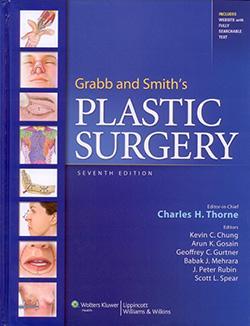
Dr. Thorne is the Editor-in-Chief and the author of several chapters in Grabb and Smith's PLASTIC SURGERY, 7th Edition.
Ear Construction Chapter in PDF






